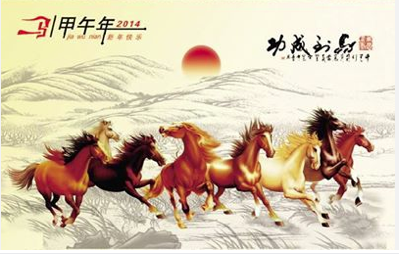By DOUG TSURUOKA, INVESTOR'S BUSINESS DAILY
Posted 05/11/2011 05:50 PM ET
The Chinese flag is displayed on an electronic screen at Nasdaq on Wednesday for the initial public offering of Jiayuan.com. China's largest dating... View Enlarged Image
A passel of U.S.-listed Chinese stocks have run into trouble lately. Some have restated earnings or undergone trading halts as the SEC probes accounting glitches or allegations of malfeasance.
Trading in the last two months was halted on China Electric Motor, NIVS Intellimedia Technology and Puda Coal, to name a few. Fertilizer and feed maker Yongye International's (YONG) production figures and ties are also being questioned by analysts.
Shares of several others tumbled without any company-specific news. The volatility comes at a time when Chinese IPOs in general are struggling. Renren (RENN), "China's Facebook," fell below its $14 IPO price Wednesday after hitting 24 intraday in its May 4 debut. But appliance maker Deer Consumer Products (DEER) brushed off criticism to post Q1 profit and sales growth above 40% on Tuesday.
There are no hard rules to investing in China-based companies that trade in the U.S. But analysts say these six points offer a good checklist:
1. Are they industry leaders in China?
2. Do the companies use any of the Big Four global accounting firms (KPMG, PricewaterhouseCoopers, Deloitte Touche Tohmatsu, Ernst & Young)?
3. Do they have the sponsorship of big investment funds?
4. Is there serious backing from venture capital funds?
5. Are sizable chunks of equity owned by management?
6. Are Americans on the board?
"The best rule of thumb for investing in China is whether that company is No. 1 in its space," said venture capitalist David Chao, co-founder of early-stage tech VC firm DCM. "Competition is fierce in China. Such companies have withstood the test of time."
Chao compares China's situation to Japan, where giants like Sony (SNE), which led in the early 1960s, are still pretty much the leaders today. Chao is on Renren's board.
John Mattio, a senior vice president at investor relations firm HC International in New York, says many U.S. fund managers won't take a stake in a Chinese company unless its auditor is one of the Big Four. It stems from a belief that smaller bookkeepers can't check or balance their work.
But Mattio warns that bigness alone won't ensure accuracy. Chinese law requires large foreign auditors to join with local accounting firms, he notes. This means Chinese partners, not U.S. expats, often do the books.
"It's not like the team from midtown Manhattan is flying to China to do the audit," he said.
China MediaExpress (CCME) hasn't traded since March 11 after months of claims of cooked books. That same day, a Deloitte Touche affiliate severed ties.
Sponsorship and rising holdings by big mutual funds, hedge funds, banks and other institutions are other positives.
Janet Stites, publisher of China Business Knowledge, an online newsletter that tracks U.S.-listed Chinese firms, says big funds have the staff and resources to conduct due diligence.
"If Fidelity is investing, it's not a 100% good call, but it's a good place to start," Stites said.
Also desirable are credible margins and strong EBIDTA, though those can be hard to pin down in fast-changing, booming China.
Analysts like to see top executives with a stake in future performance. For example, managers own 17% of Chinese search engine Baidu (BIDU).
The downside: Some heavily family-owned Chinese firms are used as cash dispensers.
Depth and length of VC funding is another guide. Internet firm Qihoo 360 (QIHU), which raised $175 million in a successful March IPO, had over five years of substantial VC backing, Stites says.
DCM's Chao says having U.S. directors shows that a Chinese firm can tap U.S. expertise and will likely adhere to U.S. governance standards.
Stites cites hog producer Tianli Agritech (OINK). One director is Peter Gadkowski, an ex-SEC enforcement attorney and founder of a 30,000-sow farm in Colorado.
